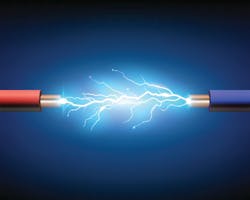When I struck off on my own in 1979, I had a friend who sold coal and wood stoves and boilers. I, having a strong back and weak mind, installed those very heavy stoves and boilers. One day, he asked me to go with him to help size a coal boiler for a farmer who was having trouble staying warm during cold weather. The farmer lived in the home he grew up in and had been tending the coal fires since he was a young lad.
Upon arrival, you can imagine our surprise to find a new coal boiler had been installed and connected to the old gravity hot water system. The workmanship was impressive and the installer obviously took great care to wipe all solder joints while keeping all piping square and level. We listened as the farmer explained his plight: a local plumber had gone to a supply house seeking advice about obtaining a coal boiler to replace the original coal boiler and the dutiful salesman had visited the farm with the plumber. The salesman sold a new coal boiler to the plumber who sold the installation to the farmer.
The problem was the farmer could no longer maintain the 68°F indoor air temperature desired and the coal fire would burn out in six hours, making a good night’s sleep impossible. As you might expect, the farmer was not happy and complained to his plumber who, in turn, complained to the salesman and together, they visited the farmer. This led to another visit on site that included the plumber, the supply house salesman, and a young lad who represented the international coal boiler company that also manufactured oil and gas boilers. The farmer simply wanted the problem corrected and was willing to pay the plumber any additional costs — even if he needed a larger coal boiler.
Things went south quickly when the young lad representing the huge international boiler company pronounced his finding: “Obviously, the owner doesn’t know how to properly maintain a coal fire!” Having stated this as fact loudly before the assembled gathering, which included the farmer, did not sit well with the farmer who had been tending the coal fires for more than five decades. That boiler held 14 lb. of coal. The boiler we proposed had capacity for 250 lb. of coal.
Pure coal contains 14,400 Btu, but normal coal, due to impurities, will contain around 12,000 Btu of energy. The great big international boiler company’s literature stated the model installed would provide 150,000 Btuh for 12 hours before needing additional coal. As the farmer told us, he would have been satisfied with an apology, but now he was hopping mad and hired an attorney. We installed the new 250-lb. coal boiler and set the other boiler aside per the farmer’s request.
I was subpoenaed to testify under oath at the arbitration hearing. The big boiler company flew in two attorneys from New York; the supply house brought their attorney, the plumber his attorney, and the farmer his, too. Three attorneys sat on the arbitration panel and one was married to my cousin and asked if he should recuse himself while a second lawyer was a long-term close family friend and asked the same question. The supply house attorney was one of my customers and she had no objection and neither did the hired guns from New York.
As I had requested, the farmer’s attorney first asked me about the coal boiler’s installation and I provided the court with a glowing description of the professional letter-perfect installation — the plumber was off the hook. Math don’t lie: the glossy literature’s printed Btu-ratings did not compute. The salesman had relied on the printed literature, so the supply house was off the hook too. The farmer was granted judgment against the big boiler company for the entire original installed cost plus the cost for our boiler with its 250-lb. coal capacity and its installation.
The new Eshland coal boiler worked exactly as promised and the farmer was very happy. Right up until he developed severe back problems 18 years later and could no longer shovel tons of coal each year to maintain the heat and generate domestic hot water. Enter an oil-fired boiler with a domestic coil and the coal boiler remained connected for a dual set up — in case the power went out. Years later, the farmer had us disconnect and remove the coal boiler.
Having never had air conditioning, the farmer asked this year what could be done with the old farmhouse that was his parents’ before him. He now has two concealed inverter mini-split air handlers for the four rooms under the attic and a mix of floor console and wall-hung mini-splits for the six rooms on the first floor over the basement — all of them connected to two outdoor condensers. Over the past 38 years as a customer he’s gone from coal to oil to electric and increased operating efficiency with each change.
Dave Yates material in print and on Contractor’s website is protected by copyright 2017. Any reuse of this material (print or electronic) must first have the express written permission of Dave Yates and Contractor magazine. Please contact via email at [email protected].
About the Author
Dave Yates
Dave Yates material in print and on Contractor’s Website is protected by Copyright 2017. Any reuse of this material (print or electronic) must first have the expressed written permission of Dave Yates and Contractor magazine.
